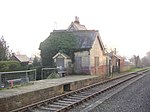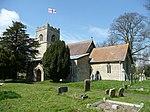Varsity Line

The Varsity Line was the main railway line that linked the English university cities of Oxford and Cambridge, operated by the London and North Western Railway. In World War II, the line became a strategic route for freight avoiding London, and additional connections were made to nearby lines to improve it, but was not greatly used for its intended purpose. After the war, the line was again scheduled to be developed as a strategic route, but that scheme was never fully implemented either. Passenger services were withdrawn from most of the line on 1 January 1968, and only the Bletchley–Bedford section remained open for passenger traffic. In 1987, the section between Oxford and Bicester was reopened, followed in 2015 by a connection to the Chiltern Main Line at Bicester, enabling Chiltern Railways to operate an Oxford to London passenger service. There are funded plans for the entire line to be re-established by the mid 2020s, partly on a new route and under a new name – East West Rail.
Excerpt from the Wikipedia article Varsity Line (License: CC BY-SA 3.0, Authors, Images).Varsity Line
Geographical coordinates (GPS) Address Nearby Places Show on map
Geographical coordinates (GPS)
| Latitude | Longitude |
|---|---|
| N 51.968 ° | E -0.818 ° |
Address
MK17 0PL , Mursley
England, United Kingdom
Open on Google Maps









